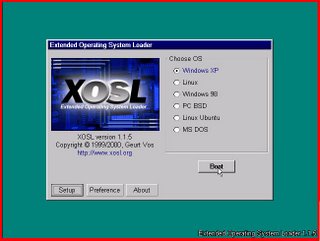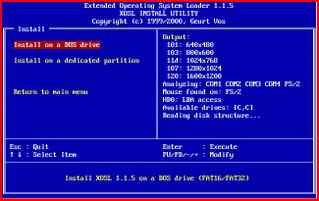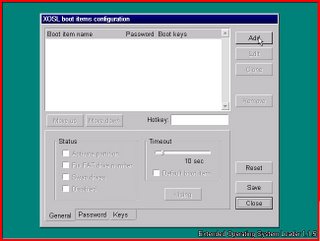Make your PC Dual / Multi boot with these easy steps...
In my opinion, no computer is complete unless it has more than one Operating System installed.
If you are using Windows, you are deprived of security and geek-ness of Linux and if you are die hard Linux fan and ‘Windows' word makes you uncomfortable, hold your breath, there are billions of nice applications you can't run anywhere else other than in Windows, so have one installed in your computer ASAP!
In a way, Dual/Multi boot PC is the need of the hour.
Here is no nonsense, step by step guide for you to make your PC multi-boot heaven.
Warning: Some instructions given here, though are non-destructive in nature, and your data will remain safe, still, some inadvertent move may make your PC in an un-bootable state. So, proceed only if you think you know what you are doing! Absolutely no liability and no warranty! Thanks. :)
Step 1 Write down your Disk stats:
You need at least two partitions in your hard disk for a true dual-boot machine. For a multi-boot machine, you need as many partitions as many Operating System you want to install. There are workarounds to install multiple operating systems in single partition. You can install another operating system either through virtual machines like vmware or by making a large file (in some cases, such as Mandriva Linux) that works as a partition but you will not get true working environment and at times, they hinder performance of base, installed operating system.
If you already have one or more free Partition, you can skip to next section, otherwise read on:
Step 2 Create additional partition for additional OS
If you do not have at least one free partition for an additional OS, then you need to create one. If you have only one hard disk installed, then it is a good idea to buy another one with fairly large capacity - say, 80 GB and partition it in more than 2 and use it for your new OS. If you have fairly large amount of free space available in your existing Windows installation and you do not want to buy another one (or have already installed a second hard disk!), then you can create a partition in the free space. To create a partition from Dos-Windows free space, you can use a free partition utility FIPS. If you want to create additional partition in free space available in Windows machine, then first defragment it and then use FIPS. It is simple in use, non destructive (i.e., your data remain safe if you handle it wisely) and hugely popular. If you think partition funda is a bit technical, then you can ask one of your tech friend to help you out in creating one for you.
Step 3 Install additional OS in new, empty partition
Now, you have created (or you already have one) an empty partition for an additional Operating system. Install additional operating system in this empty partition by standard way. If you are installing Linux on an existing Windows installation, (though Grub / Lilo boot-loader of Linux can easily handle booting Windows through MBR) it will be a good idea to install Linux boot loader in the first sector of root partition where Linux is being installed. To boot multiple OS, it is always a good idea to use third party boot loader utility like XOSL. XOSL can boot over 30 Operating System from same computer. This way, any further change to MBR or changes on boot record of root directory (when you install another OS or uninstall/remove existing one) of partitions will make no effect in boot record and process, and your machine will remain in nice, bootable state.
Step 4 Install boot loader XOSL
Download and extract XOSL in an appropriate Windows directory. Run install.exe, the XOSL installer from the extracted files.
XOSL will ask you where to install. Select on dos drive C, and follow on screen instructions. When done, you will need to reboot the machine.
After reboot, you will see XOSL boot selection screen. You need to setup XOSL for the operating system you have installed ( or going to install) in various partition.
.
.
Click on Setup button of XOSL screen.
In the next screen, click on Add button. XOSL will automatically scan for available bootable partition, MBR, floppy, CD disk drives and will present it in selectable window. Select the one you want to boot in to and give it a name. For example, HD0 partition has Windows, so give it a name Windows, and click Apply. Repeat the step to add all the available operating system and partition. You can add entries for empty partition too - where, in future, you may install Operating Systems. When done, click on Save button, and then click Close button.
Finally, you are ready to boot in to the OS of your choice!
With XOSL installed in your computer, you can install over 30 operating system in the same machine. OS like Linux can record boot information on first sector of partition, and hence can easily be managed through XOSL. But when you install or reinstall Windows, XOSL gets overwritten by Windows default MBR. In this case, you need to restore an already installed XOSL.
To restore XOSL, again, run install.exe of XOSL, then select Restore XOSL with the help of arrow keys and press enter. Follow on screen instructions, and you are done. Simply reboot the machine and everything will be back as ever!






2 comments:
Could one create a bootable CD (or USB stick) with just XOSL on it?
in USB stick, you can. during XOSL installation, choose USB root directory. You can transfer this image to bootable CD also, but the very idea - booting from various Harddisk partitions may not work as intended since every other hard drive have their own, different partition table.
Post a Comment